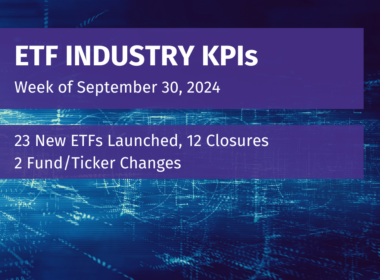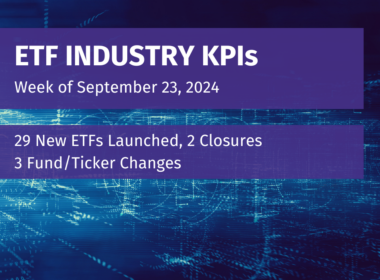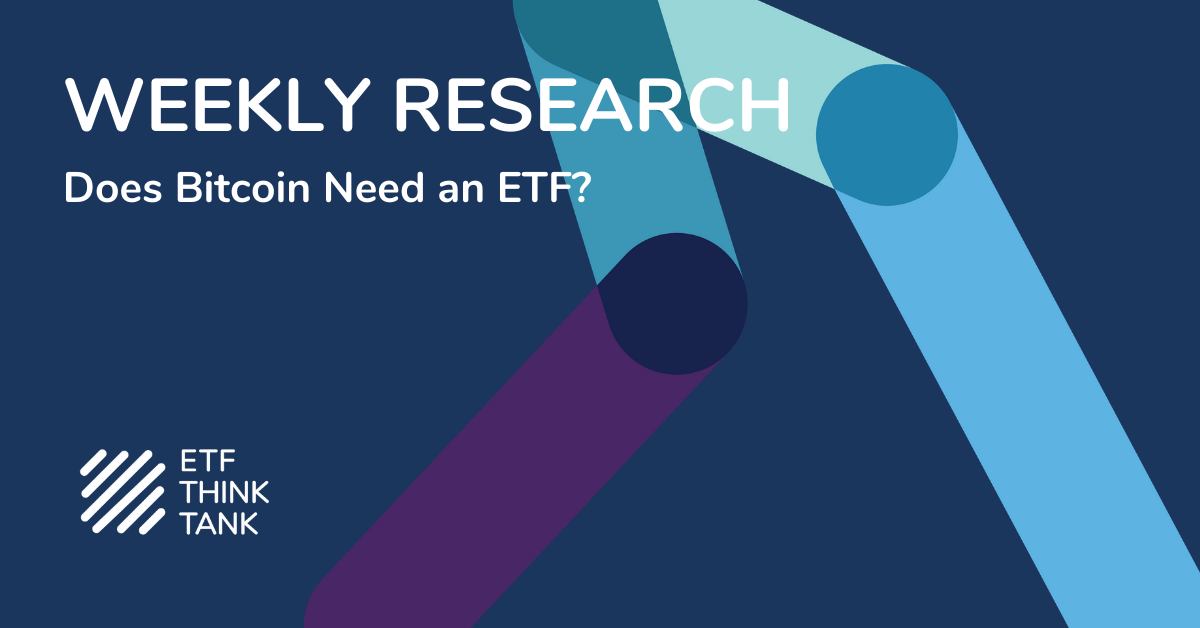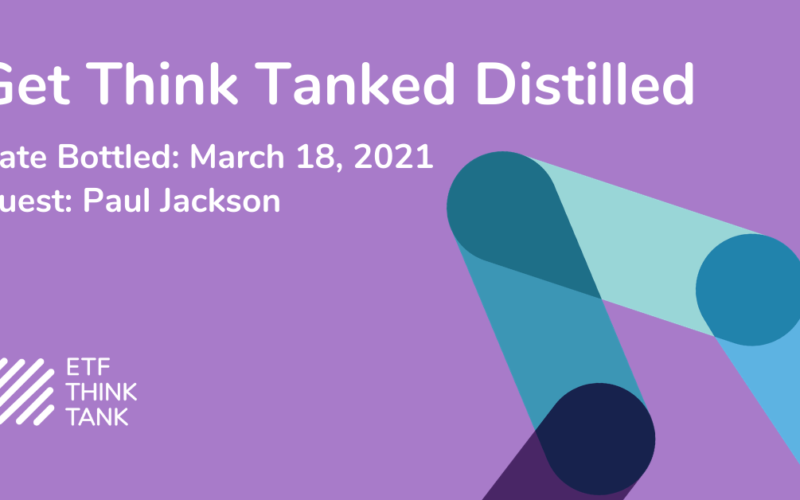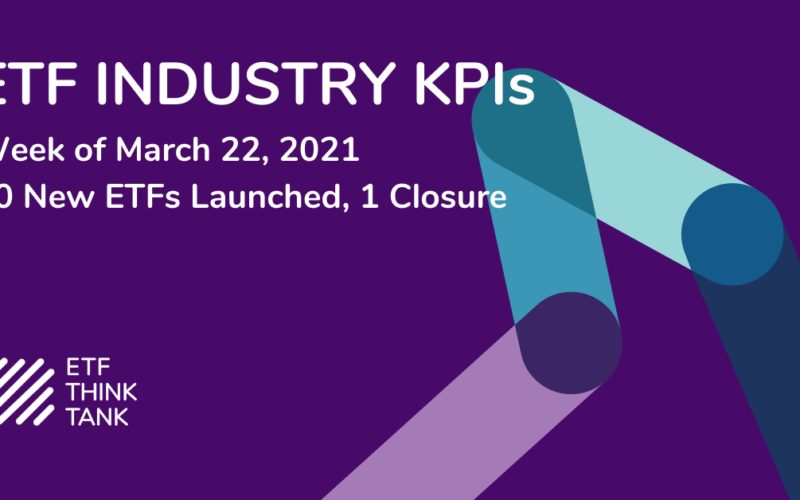The ETF Think Tank is dedicated to furthering education regarding investing and the benefits of the ETF structure. To that end, it is impossible to ignore the excitement around Bitcoin and a potential Bitcoin ETF listed in the United States. This is not a new subject for us; back in early 2017, we covered the multiple pending filings with the regulators:
Combining ETFs and Bitcoin is likely to be consequential. After all, ETFs have been revolutionizing investments for 25 years, and Bitcoin, since its 2009 introduction, has shown potential to completely change financial transactions. In an age where asset allocation is its own asset class, a Bitcoin ETF could have a place in many portfolios.
None of those filings were approved. Five years later, we are seeing a new crop of proposals seeking to provide direct exposure to Bitcoin in the ETF structure.
Five Long Years
In addition to a meteoric rise in price for Bitcoin, a lot has changed in the finance system infrastructure during these five years. Traditional custodians like Fidelity, Bank of New York and Gemini have stepped in. Monitoring and AML processes are being built and deployed by banks and exchanges. Multiple ETFs and ETPs have been launched in Canada and Europe. The leadership of the regulators has changed with the administration turnover. Is this enough for a US Bitcoin to be approved? Only time will tell, but with five active filings already in place, the clock is ticking.

Structure Matters (@ETFProfessor)
Currently, the primary way that investors gain exposure to Bitcoin in a traditional brokerage account is through Grayscale Bitcoin Trust (GBTC). This fund is NOT AN ETF. Because the fund trades at a premium, or discount to the underlying NAV or value of Bitcoin held in the trust, many people call it a Closed End Fund (CEF). GBTC is NOT A CEF. The fund is created as an emerging growth trust and not held to the standards of 40 Act law. We explained this structure back in 2017:
Recently, a job posting from Grayscale to hire seven positions with ETF experience suggested that they may revisit converting GBTC to an ETF. However, as Dave Nadig pointed out in his deep dive on GBTC, there is very little incentive for them to convert permanent capital into a redeemable fund.
On March 15th, SEC Commissioner Hester Peirce noted the unintended consequences of the multiple failed filings for Bitcoin ETF. Hopefully her pragmatic thinking is contagious.
“By waiting, we also have magnified the first-approved advantage in the Bitcoin ETP or registered fund space. Moreover, because we have comported ourselves like merit regulators, investors might view any approvals as an official blessing by the Commission about the quality of the products we approve. That would be the wrong inference to draw; investors, alone or with the help of an investment professional, need to think carefully about whether any particular security—crypto-based or not—is right for them.”
Her speech Paper, Plastic, Peer-to-Peer is a must read.
An Unpopular Conclusion
An ETF would just be an on-ramp to access Bitcoin. Ironically, the original thesis of Bitcoin was intended to replace the need for a “trusted third party”, which is the role an ETF would play for investors. The regulators, as noted by Peirce, don’t want to convey approval as endorsement by a trusted third party. Traditional investors want an ETF so they can speculate on the price of Bitcoin. Matt Hougan from Bitwise has noted additional issues that a Bitcoin ETF solves, like lost keys, for-fee crypto advice and further blockchain adoption. It may sound contradictory, but a Bitcoin ETF is the Pandora’s box that we all seem to want opened, including the team at ETF Think Tank. Three years ago, Mike Venuto was laughed out of an interview for claiming that blockchain traded funds were the future threat to the growth of the ETF industry. Today, we are on the cusp of an ETF giving credibility to the technology that may one day replace the ETF structure. Bitcoin does not need an ETF, but ETF issuers and investors want a Bitcoin ETF. The further adoption of truly decentralized finance and blockchain will result in the demise or transformation of traditional finance.
Disclosure
The information provided here is for financial professionals only and should not be considered an individualized recommendation or personalized investment advice. The investment strategies mentioned here may not be suitable for everyone. Each investor needs to review an investment strategy for his or her own particular situation before making any investment decision.
All expressions of opinion are subject to change without notice in reaction to shifting market conditions. Data contained herein from third party providers is obtained from what are considered reliable sources. However, its accuracy, completeness or reliability cannot be guaranteed.
Examples provided are for illustrative purposes only and not intended to be reflective of results you can expect to achieve.
All investments involve risk, including possible loss of principal.
The value of investments and the income from them can go down as well as up and investors may not get back the amounts originally invested, and can be affected by changes in interest rates, in exchange rates, general market conditions, political, social and economic developments and other variable factors. Investment involves risks including but not limited to, possible delays in payments and loss of income or capital. Neither Toroso nor any of its affiliates guarantees any rate of return or the return of capital invested. This commentary material is available for informational purposes only and nothing herein constitutes an offer to sell or a solicitation of an offer to buy any security and nothing herein should be construed as such. All investment strategies and investments involve risk of loss, including the possible loss of all amounts invested, and nothing herein should be construed as a guarantee of any specific outcome or profit. While we have gathered the information presented herein from sources that we believe to be reliable, we cannot guarantee the accuracy or completeness of the information presented and the information presented should not be relied upon as such. Any opinions expressed herein are our opinions and are current only as of the date of distribution, and are subject to change without notice. We disclaim any obligation to provide revised opinions in the event of changed circumstances.
The information in this material is confidential and proprietary and may not be used other than by the intended user. Neither Toroso or its affiliates or any of their officers or employees of Toroso accepts any liability whatsoever for any loss arising from any use of this material or its contents. This material may not be reproduced, distributed or published without prior written permission from Toroso. Distribution of this material may be restricted in certain jurisdictions. Any persons coming into possession of this material should seek advice for details of and observe such restrictions (if any).




